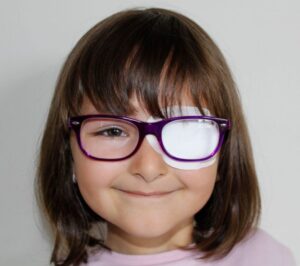Treatments
Congenital cataract surgery

What does congenital cataract surgery involve?
Congenital cataract surgery is an operation performed on children who are born with a crystalline lens that is opaque instead of clear, preventing this focusing lens from doing its job properly. It is a problem that can only be solved with surgery, through a procedure that consists of “aspirating” or removing the crystalline lens through very small incisions. Part of the vitreous gel filling the eyeball must also sometime be removed (vitrectomy, anterior).
To compensate for the lack of a crystalline lens, an intraocular lens is required to replace it artificially. However, because this surgery is normally performed at a very early age, when the child’s eye is still being formed, we do not always fit the lens during the same operation and might choose to implant it during a second surgery when the child is older. Meanwhile, special glasses or contact lenses –which the Miranza optometrists (link) adapt individually and teach the family how to wear–, provide the necessary dioptres for clear vision.
Eye diseases treated
The cataract or loss of crystalline lens transparency might be present in some children from birth, either in one or both eyes. In the case of severe opacity that makes vision difficult, we must operate as soon as possible to avoid jeopardising correct visual development during the first few months of the child’s life. Therefore, although it will depend on the criteria and assessment of the ophthalmologist, this surgery should sometimes be performed before the baby is 12 weeks old. Early intervention has proven to improve the perspectives of visual recovery.
Recovery
While cataract surgery in adults is performed with topical anaesthesia (eye drops), we use general anaesthesia on children for increased calmness and comfort during the operation. After making sure the child feels all right after waking up, he or she can return home the same day and does not have to be hospitalised.
In the case of bilateral cataracts, i.e. in both eyes, we normally operate on one and then the other to ensure good post-operative evolution. We will provide the family with the treatment and all the care to be followed, along with the guidelines for check ups.
Our specialists in paediatric ophthalmology will also weigh up the best option for visual rehabilitation in each case, and will monitor the progressive improvement in the child’s eyesight and any changes that might require optical correction until the final intraocular lens has been implanted. The main goal is to ensure the appropriate stimulation of his or her visual capacity so that there is no deficiency that cannot be reversed as an adult.

